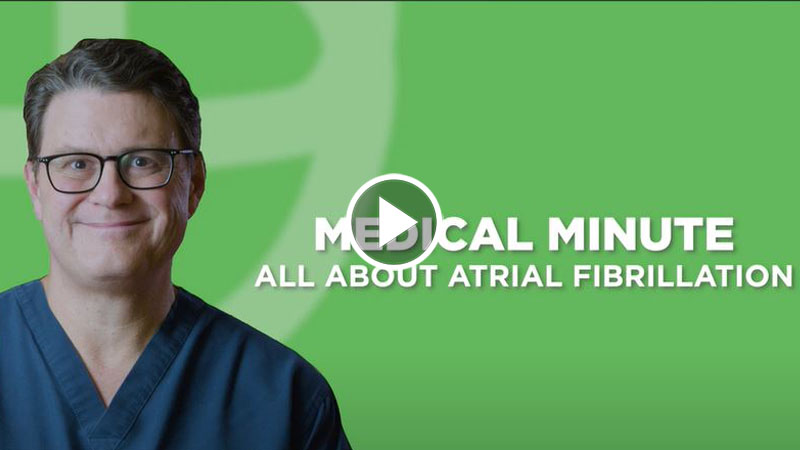
Finding the Rhythm
The most common cause of death among people with heart disease is electrical misfiring that leads to cardiac arrest. Fortunately, arrhythmias that weren’t even treatable 15 years ago are now curable thanks to modern technologies. Those that can’t be cured are still highly manageable.
Am I at Risk?
You’re more likely to develop atrial fibrillation if:
- You have certain health conditions, such as diabetes, hypertension, heart disease or heart failure
- You’ve had a heart attack
- You recently had heart surgery
- You drink excessively or smoke
- You’re age 60 or greater
The average heart beats around 70 times per minute. During an atrial fibrillation episode, heart rate often reaches upwards of 300 beats per minute.
What to know about Atrial Fibrillation
Learn about the signs, symptoms and risk factors of atrial fibrillation.

-
Ablation Procedures
Ablation procedures are used to correct abnormal electrical pathways in the heart so the current flows properly. Many abnormal heart rhythms can now be cured by passing a small tube called a catheter inside the heart and positioning the catheter next to the area of abnormal electrical activity inside the heart. Electrical energy is then applied, which burns that tissue and eliminates the rhythm disorder.
-
A resynchronization device, or a biventricular pacemaker, is a small, battery-operated device. When it senses that your heart is beating irregularly, it sends a signal to your heart that makes it beat at the correct pace. A resynchronization device is used in cases of severe heart failure. It helps resynchronize the beating of the heart chambers. Usually, this device can also work as an implantable cardioverter defibrillator (ICD). An ICD restores a normal heartbeat by delivering a larger shock when a potentially deadly fast heart rhythm occurs.
-
Device Implantation
Defibrillator Implantation
An electronic device is implanted underneath the collarbone and contains a pacemaker with a special wire that provides a shock in the event that the heart rhythm stops (cardiac arrest). This device restores the rhythm of the heart and reduces the risk of sudden death due to cardiac arrest.
Implantable Loop Recorder
An electronic device, which has a recording device, is implanted underneath the collarbone. This allows doctors to monitor the rhythm of the heart for long periods of time in order to capture and record abnormal rhythms that are difficult to capture.
-
Transesophageal Echocardiogram (TEE)
A narrow tube is inserted inside the stomach and sonogram images of the heart are obtained from within the body at very close proximity to the heart. By doing this, physicians can obtain very high-definition, quality images of the interior of the heart.
-
Watchman™ Left Atrial Appendage Closure ImplantWatchman is a permanent implant that closes off a part of the heart where blood clots commonly form. The Watchman implant is about the size of a quarter, and it doesn’t require open-heart surgery.



